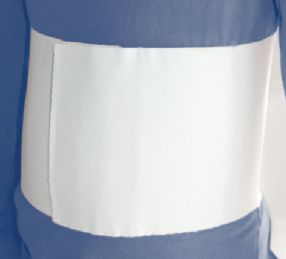
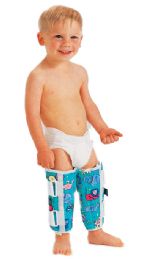

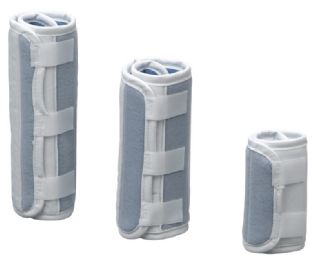
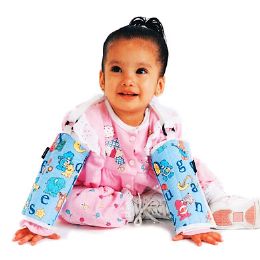
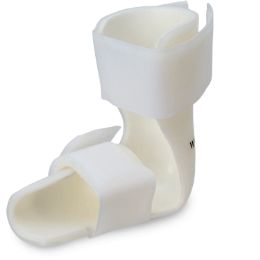
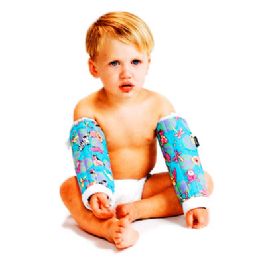
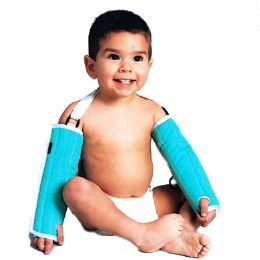
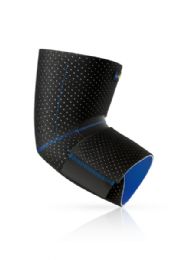
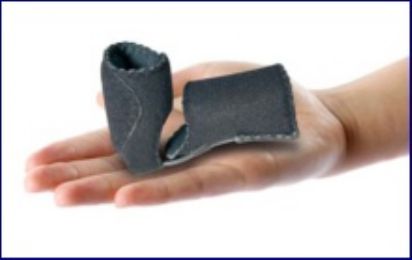
What are Pediatric Orthotics?
Pediatric orthotics refers to any type of device, such as a foot, ankle, or knee brace, meant to help a child’s limb. These supports are made to correct malfunctions that can affect the feet, knees, and ankles of a child. Many conditions affecting a child’s feet or knees may require the use of pediatric orthotics, including partial paralysis, multiple sclerosis, or clubfoot. Pediatric devices which are made to support the foot of a child with plantar fasciitis may have a type of heel insert. This is typically placed inside a shoe to give extra cushioning and help reduce inflammation often associated with this condition.
A child suffering from deformities which affect the legs often require the use of pediatric orthotics to strengthen the muscles. They can also help promote proper posture while standing and walking. These types of leg braces with special reinforcements are typically created to keep the bones and joints aligned properly. A chronic disease that affects both children and adults is rheumatoid arthritis. When this disease strikes a child it is known as juvenile rheumatoid arthritis. In many cases, inflammation and pain from this condition can lead to difficulty in walking due to immobile and stiff joints. Pediatric orthotics in various styles can help the needs of a child afflicted with this disease.
Pediatric orthotics may also be used to speed the healing process in certain cases of sports-related injuries by alleviating pressure of the injured area. Strains, sprains, and fractures are injuries which can be treated with orthotics.
How Do I Choose the Best Pediatric Orthotics?
Choosing the best orthotic for a child mainly depends on the underlying muscle or bone issue from which the child suffers. They are commonly worn throughout the day, and sometimes at night, to support or control a child’s movements. The orthotics can help prevent muscle stiffness which may be experienced with certain issues of the leg or foot. They can also help with different types of gait issues. Pediatric orthotics can assist in a variety of developmental changes, such as when the knee needs to be supported from side to side movement, to help keep the knee cap properly in place, for ankle contractures, and for clubfoot.
For some, early orthotic intervention is important and may be used by a child as young as two years old. A child with developmental disabilities, muscle tone issues, or motor disorders, such as cerebral palsy, may benefit from early intervention by an orthotic. The guidance of a medical professional may be helpful in choosing the correct type of orthotic.
How Do I Choose the Best Arm Brace?
There are many types of arm braces that provide stability, support and relief from conditions or injuries which affect the joints, muscles, and tendons of the arm. When choosing an arm brace, there are multiple styles available to fulfill specific requirements. What type is best is dependent upon the specific area of the arm that needs support, such as the wrist, elbow, shoulder or whole arm.
Shoulder braces are a type of arm brace which can provide stability, improve posture, or prevent the shoulder muscles and joints from moving. They are available as slings, wraps, or immobilizers. Wrist braces help to stabilize and prevent pain in the wrist for a child with an injury or a disability that requires controlling a wrist’s movements. They can also be worn after a cast has been removed to prevent the injury from reoccurring. Wrist braces can be made of flexible materials, such as elastic and cotton, or a combination of foam and elastic, plastic elements, or aluminum to provide more support.
Since elbow braces provide immobility, support and compression, they can be helpful for common injuries that require their use; for example, tennis elbow or sprained or strained ligaments. A child suffering from arthritis or other non-injury conditions may use an elbow brace to prevent injury, alleviate pain, or heal damaged muscles and ligaments.
An entire arm brace can be used by a child to immobilize the arm for proper positioning while an IV is in place. It can also be used to prevent bandages from being scratched off, to prevent a child from pulling on an NG tube or tracheotomy, or just for controlling arm movements because of a disability. It is important to choose the right type of arm brace that will help with a child’s specific need or injury while allowing them the flexibility and range of motion necessary. Many pediatric arm braces are available in bright colors or in fun designs to encourage a child to keep it on.
Rehabmart is pleased to carry an extensive variety of superior quality pediatric bracing, supports, and immobilizers from high quality vendors, such as Comfy Splints, Orthomerica, Merritt Manufacturing, Sammons Preston, Southpaw Enterprises, North Coast, Medi Kid Co., DeRoyal, Restorative Care of America, Posey, Midline, and BSN Medical.
Hulet Smith, OT
Rehabmart Co-Founder & CEO
lb